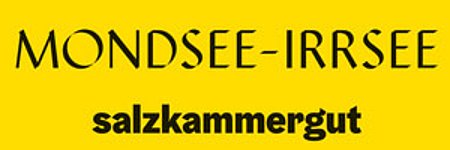Wedding church basilica St. Michael Mondsee
5310 Mondsee am Mondsee

The Basilica of St Michael in Mondsee -
a special art treasure near Salzburg
Former Benedictine collegiate church
Patrocinium: 29 September
The first monks are said to have come from Monte Cassino according to the monastic tradition. However, there are also serious considerations that the first monks lived according to the Regula mixta. After the overthrow of Duke Tassilo III by Emperor Charles, Mondsee became an imperial monastery.
Around 800, it experienced its first heyday. It was linked to Abbot Hildebald (804-814), who was the court chaplain to Emperor Charlemagne and later Archbishop of Cologne, who ruled Mondsee.
In 833, Mondsee came under the rule of the Regensburg bishops through an exchange of monasteries.
In 943, the monastery was pillaged by the Magyars. St Wolfgang is said to have stayed in Mondsee as Bishop of Regensburg from 976 to 977. "He fled to the pirg, haust zu Mainse im closter, das gleichzeit dem pistumb zu Regensburg zugehöret" (Aventin). His stay in this area later led to the creation of the important medieval pilgrimage site of St Wolfgang.
Under Abbot Rudbert (1072-1115), a Romanesque church was built, which was consecrated in 1104.
In 1142, Abbot Konrad II Bosinglother was able to enforce the free election of abbots, giving the monastery its independence. Abbot Konrad was murdered in Oberwang on 15 January 1145 and was venerated as a saint in the monastery very early on.
The Mondsee Monastery and the Mondsee region belonged to Bavaria-Landshut until 1506. At the end of the Middle Ages, there were even tendencies towards independent rural development. Maximilian I received the Mondsee and Wolfgangland for Austria after the Landshut succession dispute in 1506. According to a will that was later cancelled, he even wanted to build his final resting place in this monastery land.
In the 15th century, the monastery once again experienced a period of prosperity. Abbot Johannes II Trenbeck (1415-1420) took part in the Council of Constance. He is also said to be the author of a history of this council. The magnificently decorated Urbarium of 1416 was written during his tenure.
His successor as Abbot Simon Reuchlin (1420-1463) introduced the reform originating from Melk Abbey. As a result, almost all the churches in the Mondsee region were rebuilt and new monastery buildings were erected. The chapter house was built in 1444 and the cloister in 1448.
Abbot Benedikt Eck (1463-1499) had the present late Gothic church built under master builder Hans Lenngdörffer from Burghausen. The consecration of the nave was celebrated in 1487.
Abbot Wolfgang Haberl (1499-1521) had the High Cross Chapel built for pilgrims. He also founded the first monastery grammar school in Upper Austria in Mondsee in 1514, which existed until the monastery was dissolved.
In 1626, the Salzburg sculptor Hans Waldburger designed the early Baroque high altar, which is up to 18 metres high.
It was Abbot Coelestin Kolb (1668-1683) who brought Meinrad Guggenbichler (born in Einsiedeln in 1649) to Mondsee. He worked in Mondsee from 1679 until his death in 1723.
He created the following altars for the monastery church: the Holy Spirit Altar, the Wolfgang Altar, the Corpus Christi Altar, the Poor Souls Altar, the Sebastian Altar, the Altar of the Virgin Mary and the Altar of St Peter. The pulpit and the organ case also originate from his artistic endeavours.
Under Abbot Coelestin, the church interior was greatly altered. The rood screen (separating the chancel from the rest of the church) was removed. Low baroque chapels with groined vaults were built in the north and south aisles.
Later, the Tyrolean Franz Anton Koch (1700-1756) added further altars: the altar of St John, the altar of St Joseph, the altar of St Anne or the Virgin Mary and the altar of St Anthony. The altar of the cross was created by the Mondsee sculptor Leopold Schindlauer.
The 1000th anniversary celebrations took place during the tenure of Abbot Bernhard Lidl (1729-1773). He took this as an opportunity to erect the four-axis, four-storey double-tower façade.
The towers are 52 metres high today. The figures of St Peter and St Paul can be found in the façade. The abbot himself wrote an extensive history (Chronicon Lunaelacense) of the monastery from its beginnings.
After the market fire of 1774, which also destroyed the church roof, the monastery roofs in the south were replaced by the current mansard roof.
After the death of Abbot Opportunus (1773-1784), the election of a new abbot was forbidden and an administrator was appointed. In 1791, Mondsee Monastery, the oldest monastery on Austrian soil at the time, was abolished. The bishop of the newly founded diocese of Linz received the monastery property as an endowment.
In 1809, Emperor Napoleon gave the monastery and its estates to the Bavarian field marshal Karl Philipp von Wrede. His descendants owned it as a "castle" and "Mondsee estate" until it was sold in 1986.
In 2005, the former monastery church was elevated to the status of a minor basilica under Pope John Paul II.
In 2005, a three-year renovation of the church interior began, during which the interior shell of the church was completely renovated. All altars, pictures, floors in the chancels and banners were also subjected to a thorough inspection, cleaning, conservation and necessary restoration work.
The east side of the church appears to have a double choir. On its north side, the church is connected to the former monastery (now a castle). The three-nave basilica church is one of the most outstanding and largest architectural monuments in Austria (70 metres long, 34 metres wide and 22 metres high). Integrated into the church building are the former treasury (now sacristy) of the monastery, the monks' prayer choir and the 36 metre long Gothic monastery library, which was once a medieval lectern library. The former prayer choir and the library are currently part of the Mondseeland Museum.
5310 Mondsee am Mondsee
Phone +43 6232 4166
E-Mail pfarre.mondsee@dioezese-linz.at
Web www.dioezese-linz.at/mondsee
Contact person
Mr Pfarrer Reinhard Bell
Pfarre Mondsee
Kirchengasse 1
5310 Mondsee am Mondsee
Phone +43 6232 4166
E-Mail pfarre.mondsee@dioezese-linz.at
Web www.dioezese-linz.at/mondsee
daily from 9am to 7pm,
entrance free: the parish of Mondsee asks for a little donation for the conservation of the monument
Coming from the Mondsee motorway, take the Mondsee Nord entrance. Follow the signs to the free parking lot center. Stroll across the palace courtyard to the market square and the basilica.
Routenplaner
partly short-term parking zone
The restaurants on the market square and church square are in the immediate vicinity. (Schlossbräu, Marktwirt, Hotel Porsche, Hotel Krone, Cafe Braun, Cafe Frauenschuh, Cafe Übleis).
- Shop
If you are interested in a guided visit please contact the parish of Mondsee, 0043 6232 4166
entrance free: The parish asks for a little donation for the conservation of the monument.
- voluntary contribution
- All weather
- Suitable for groups
- Suitable for schools
- Suitable for kids (all ages)
- Suitable for pushchairs
- Suitable for teenagers
- Suitable for seniors
- Suitable for single travelers
- Suitable for friends
- Suitable for couples
- Suitable for children
- Spring
- Summer
- Autumn
- Winter
Somewhat suitable for wheelchairs: Assistance is sometimes necessary. The measurements do not (fully) conform to the legally stipulated ÖNORM.
- ramp accessible
- path width (min. 150 cm)
- Entrance to the building
- Inductive hearing system












